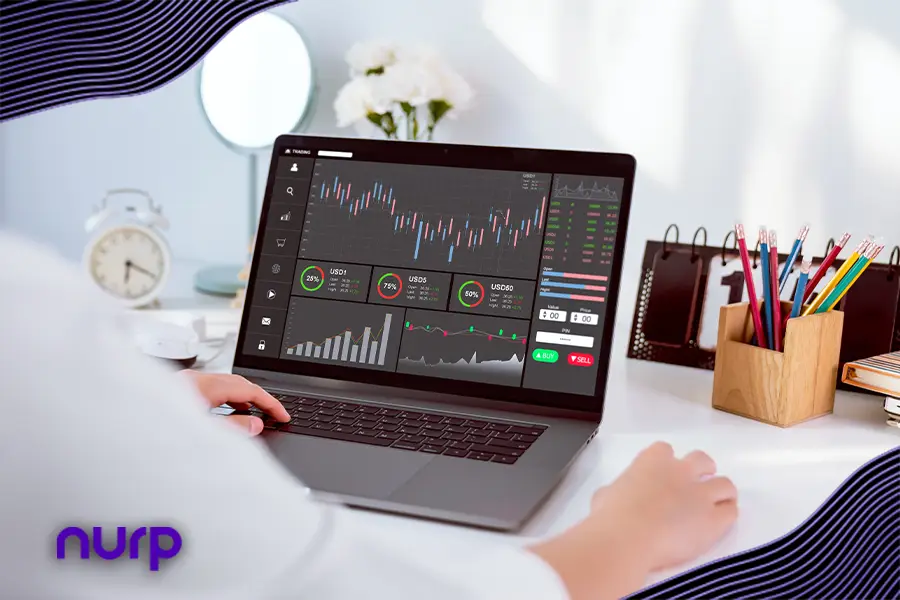There has been tons of volatility in the market, which has led many investors to take unreasonable losses without putting proper risk parameters in place. In this video, we have some US dollar news coming out, so I want to make sure that I’m getting this in front of whoever needs to see it before the news.
Without further ado, let’s jump right in.
Welcome back! If you’re new to the channel, my name is Matt Jimenez. I’m an entrepreneur who has worked with the greatest minds in finance over the last several years, and I’m here to pour into you guys everything they pour into me. Ever since last month, when I was exposed to tons of volatility in the market due to Japan raising rates, I’ve been putting massive emphasis on staying up to date on what’s coming up in the coming week. So every Sunday, I’m going to be sitting down and addressing what is ahead, if we have any volatility, and where the market could potentially head depending on positive or negative news.
Now, enough blabbering. Let’s get straight to the news. Here’s Forex Factory, and this is the calendar showing us upcoming economic news releases. To the far left, you’ll see the currency in which the news is coming out. As I go through this, you’re going to see a lot of US dollar news coming up.
One thing to note is the folder to the left will indicate how much impact this news actually has. As you can see, I’m hovering above a yellow one, which indicates low impact expected. Then, of course, the orange would be medium, and the red would be high impact. It’s very important to know this because when you’re looking at news, filtering through what’s important and what’s irrelevant can be challenging. They’ve made it easy by allowing you to see it in color code—what is of most importance and what is kind of irrelevant.
Again, it is Sunday at the moment, which is allowing me to address everything coming up for this week. The most important thing that I want to look at is all the US news. The reason being the US news is because I’m going to go ahead and open up my trading account. I have lots of US dollar positions, so I want to make sure that, with the US news coming out, I am paying attention to this software. I might want to turn off my auto trading so that I’m not involved in the software taking on more positions during a volatile time or if the position is moving too far against me.
But regardless, if I’m too busy and I can’t hit this button in time, I do have a stop loss in place at 15%. So no matter what happens, I’ll only take a 15% hit. There’s something I always say: losses in investing are inevitable, but how much you lose is up to you. With that being said, 15% is where I draw the line. I don’t want to lose anything beyond 15%. That’s my cutoff, so that’s why I have the stop loss set at that. Of course, I could change it if I’d like.
I have AUD/USD, and for some reason, on my phone with my MetaTrader, I have a lot more positions that I can pay attention to than what’s showing up on here at the moment. I’m not sure which one’s lagging and which one’s not, but that’s what it is. As you can see, there are even more AUD/USD positions coming in.
Now, another thing to mention—and this is a note to self because none of this is ever financial advice—is that this margin level sitting at 5600 per is very important for me to watch. Because if this dips down into the sub-500s or anywhere near that, then I probably want to make sure that I’m turning off my auto trading. This prevents the algorithm from scaling into more trades, which, of course, will eat up your margin. More trades equal more margin.
So, if I can stop the software from taking on more trades, it prevents me from eating up more margin, which ultimately uses more leverage and can destroy my account. But with a stop loss in place, I don’t really have to worry.
Now, back to the news. The first thing that pops out for the US dollar is this: consumer confidence. To the middle and to the far right, it shows the previous number. In the middle, it shows what’s forecasted. Of course, the news hasn’t come out yet, but over here will be where the actual number is reported. This is the number that comes back for us to read. If it’s above the forecast or below the forecast, it could influence the US dollar with a negative or positive impact.
If you don’t know what this is, you can hit this folder right here. When you hit that folder, it’ll pop up a bracket that gives a clear description of everything you need to know about it. It measures the level of the composite index based on surveyed households. Usually, if the actual number is greater than the forecast, it’s good for the currency. So, if this number comes back better than the forecast, that’s good for our currency. You could expect US dollar strength.
With that being said, I’m in a lot of short positions on AUD/USD. If that’s US dollar strength, then the volatility coming in because of this news would be in my favor since I am short AUD/USD. This news comes out every single month on the last Tuesday of the current month. The next release is September 24th.
Why should we care as traders? Well, financial confidence is a leading indicator of consumer spending, which accounts for the majority of overall economic activity. So, that’s the first major piece of news that comes out. It’s released Tuesday at around 10:00 a.m.
Then again, I have the Manufacturing Index. I don’t think it’s going to be of much significance because it’s an orange folder, indicating medium impact. I’m not going to go over this one because I don’t want to bore you guys.
I want to take this time to go over the main points. As I’m short AUD/USD, it’s going to be very important to pay attention to both currencies because either strength or weakness in any of those currencies will obviously impact how the trade performs for me. There’s also big news around the Australian dollar, which is the CPI (Consumer Price Index).
If you don’t know much about CPI, I made a video right up above here. Go ahead and click that to get a good understanding of CPI. This data comes out every single month, typically about 25 days after the month ends. The next one is September 24th as well. Consumer prices account for the majority of overall inflation. Inflation is important to currency valuation because rising prices lead central banks to raise interest rates out of respect for their inflation containment mandate. This is important because it’s a leading indicator. Banks can understand where they want inflation to go. They could either raise rates or cut rates, and this will play a big role in the CPI. It also helps them measure where inflation is really at.
Again, I don’t want to talk about it too much because I did make a video on it. Now, scrolling down a bit deeper, we have an orange folder at 1:15 a.m. which indicates a speech by an FOMC member. This is not too important. Whenever you see speeches or someone talking, you can expect it to be a bit hard to gauge because it’s left up to interpretation. If you see someone like Jerome Powell speaking, it’s up to the audience to gather clues from how he spoke—whether that was dovish or hawkish—and make an educated decision on whether it will have a negative or positive impact on the currency. Based on a speech, you have to interpret it, so it’s really hard to gauge those. It’s not data-driven; there are no metrics, so I tend to skip over the talks.
However, I do pay attention to what happens during these talks because I want to understand the things being said to anticipate what to expect in that currency in the coming weeks, days, or months. For instance, based on previous speeches, I now have an inkling that they’re probably going to be raising rates moving forward for the US dollar, and that’s just due to speeches held by the central bank.
Scrolling down a bit more, on Thursday we have some more US news. Later in the week, we’re going to have even more volatility, and I think this is where the majority of it will come in. This is an important piece of news: unemployment claims. This definitely impacts how markets behave. The forecast is 240,000 claims of unemployment. If that number comes back higher, you can expect more people to be claiming unemployment. So, who has to pay for that? Taxpayers. The government has to pay that, and that is probably not good for the currency. Why? Because if we’re supporting more people who are not working and funding it through tax dollars, we have to create more currency. Taxes can’t even cover the debts owed, which leads to printing more money and putting us deeper into debt.
This is a very important number to keep track of. It comes out every single month, with the next one on September 5th. It measures the number of individuals who filed for unemployment insurance for the first time during the past week. One thing to note is that unemployment claims are often a lagging indicator. By the time the claims are processed and accounted for, it’s already too late; the impact has already been priced in.
Why do traders care? Although it’s generally viewed as a lagging indicator, the number of unemployed people is an important signal of overall economic health because consumer spending is highly correlated with labor market conditions. Unemployment is also a major consideration for those steering the country’s monetary policies. It’s also known as job claims for those unfamiliar with unemployment claims.
Scrolling a bit further, we have some more really important news for the US dollar: the Core Price Index. This is very important to keep track of. Let’s go ahead and open this up. It measures the change in the price of goods and services purchased by consumers, excluding food and energy. This is important to note because anything that measures spending is a tool to gauge how inflation is performing. This ties in with inflation rates as well. These announcements are ways for the central bank to gauge how inflation is doing, even though we know it might be worse than what these numbers report. This is how they justify what is actually happening and quantify it as 2% or 3%, whatever it may be.
The forecast is 2%. If it comes back at 2%, that would be good for the currency. Anything that aligns with the forecast is typically good for the currency.
Now, that’s all the news coming up. Let’s look at the chart because the US dollar is currently taking a hit. As you can see, we are coming back to lows we haven’t seen since the end of last year. This is a massive support level that seems to be breaking right through. I think potentially what’s going to happen here is that this is a pretty overextended move. If I were to grab my measuring tool from when this move started to where it’s at, we’d already have had a 5% drop.
A little over, and my prediction—this is not financial advice, but this is what I’m hoping for—is that the news for the US dollar will come back a bit strong, which could give some type of relief bounce. I think we might trade down to this region and then pop back up to retest these levels. Again, in this area, I will address how the price action looks. Typically, if we get strong news that helps the dollar, we can expect a normal correction and then potentially more news that continues this overall downtrend.
But I’m not a fortune teller, and I don’t have a crystal ball. That’s just my prediction if the news comes back strong, which I’m hoping for. If it does come back strong, my positions will be in heavy profits, and I will be extremely happy. If not, you’ll see all the evidence on my FX book, which I will be reporting every single month for you guys to keep track of my performance. In fact, I’m going to fund a couple more accounts just to be a bit more diversified.
If you enjoyed this video and found any value in it, go ahead and hit the like button and/or subscribe. Please leave a comment.
Like always, my friends, peace.
Please visit Massive USD Moves Ahead! Are You Ready for the Volatility? to watch the full video on YouTube!
The post Massive USD Moves Ahead! Are You Ready for the Volatility? first appeared on Nurp.com.







